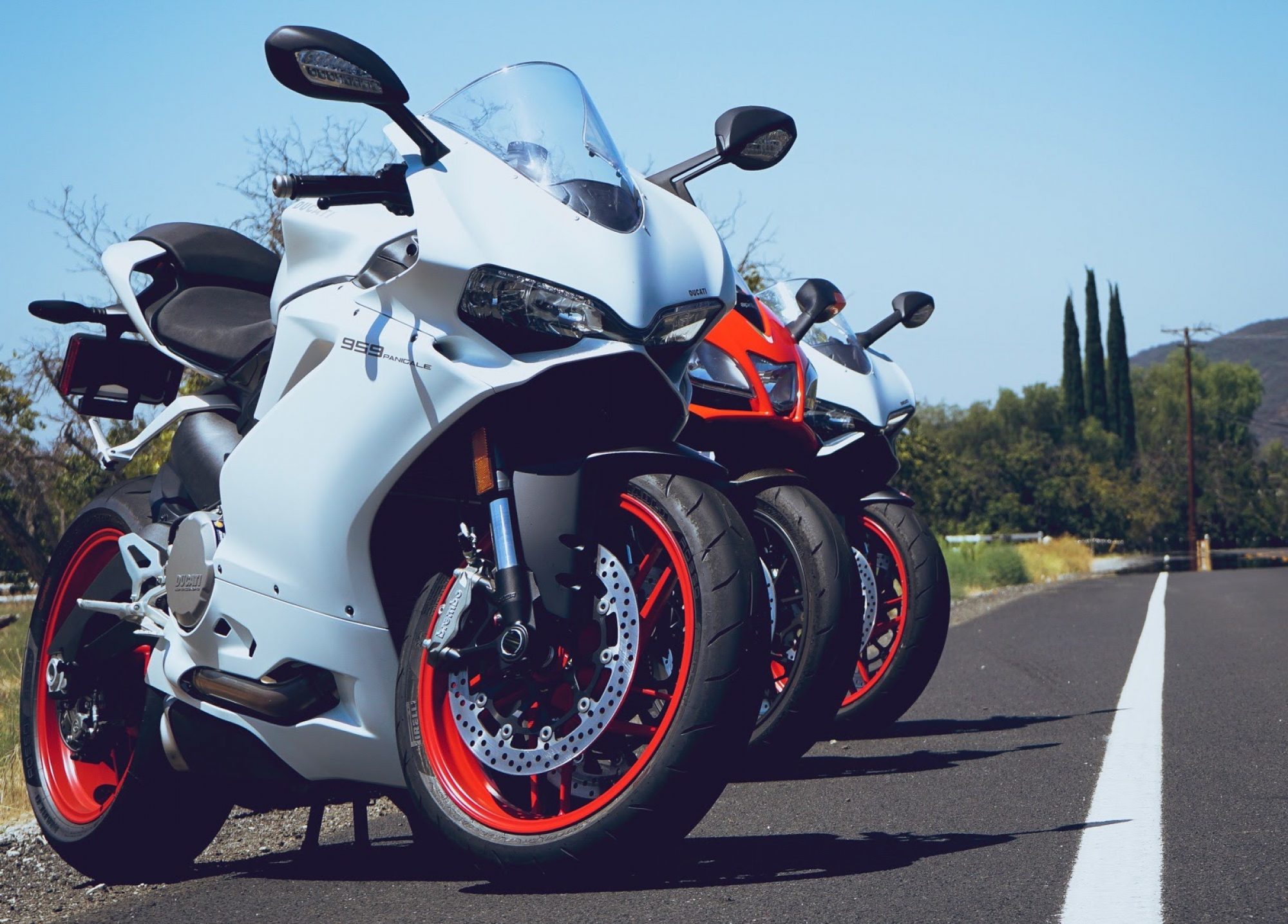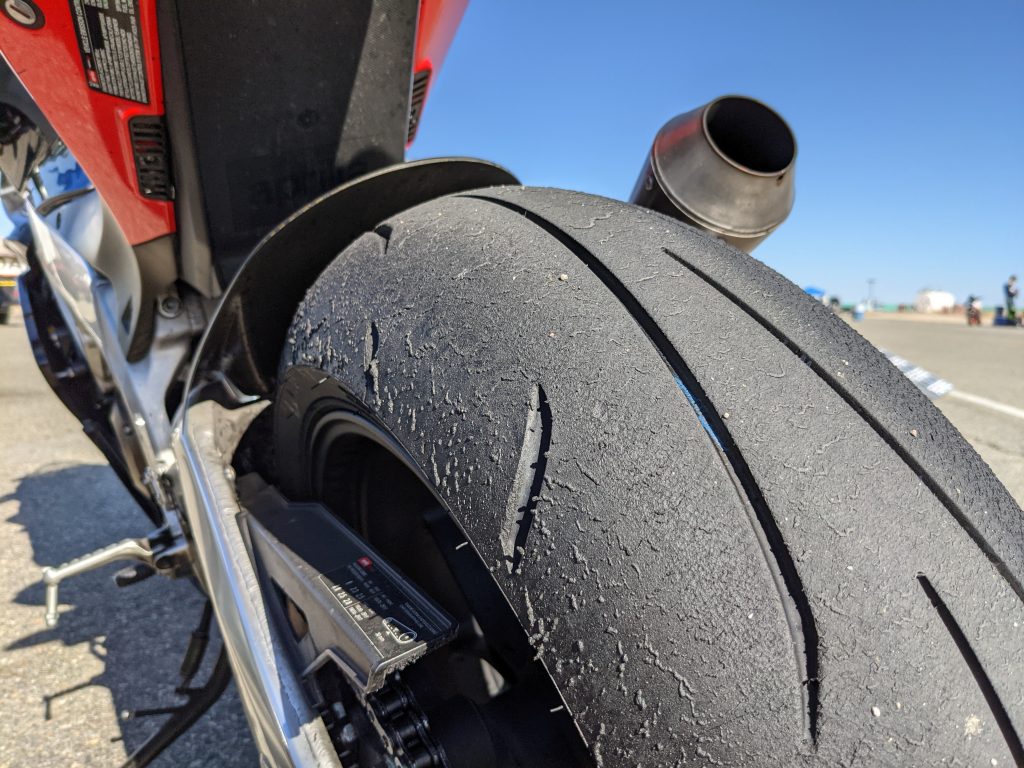
Tires are literally the only thing connecting a motorcycle to the road, so to say they’re important is a huge understatement. But for a beginner motorcycle rider it’s hard to know which tires are best, which brands are reputable, and which style of tire they should use. This is our first ever sportbike tire guide for beginners, which will hopefully answer some of these questions.
Sportbikes are built for performance, so naturally they deserve tires made to handle acceleration, braking and cornering with ease. But finding the right tire isn’t so straightforward for newer riders. Are you commuting on your bike? Do you ride canyon roads on weekends? Are you doing track days? How about long day rides? What about riding in the rain? All of these questions can help answer what type of tires are best for your sportbike.
Our Favorite Sportbike Tire Brands
First things first, here’s a short list of the motorcycle tire brands we use and trust. This does not mean these brands are the absolute best, nor does it mean that a brand not listed is not a good brand. This is simply a list of the tire brands we have used with good results.
- Bridgestone
- Dunlop
- Michelin
- Pirelli
One thing these four brands have in common is that they are omnipresent in motorcycle road racing. Look at any serious motorcycle road racing series, and you will find one of these four brands. Research and development technologies from their race tires eventually find their way into their street tires, allowing us common riders to reap the benefits. One example is multi-compound tires, in which the outside shoulders of the tires have softer rubber for better grip when the bike is leaned over, but harder rubber in the center to help reduce tread wear while the bike is upright.
Part of the difficulty for beginner riders is figuring out which model of tire is best for their bike and riding style. For example, here are some of the recent performance models from Bridgestone alone, available from revzilla.com:
- Battlax S21
- Battlax S22
- Battlax RS10
- Battlax RS11
- Battlax Sport Touring T32
It’s easy to see how confusing this big list of choices might get for a rider with little experience. And this is just one brand.
How to Narrow Down the Choices
First, check the marketing material for each model of tire. It tells you in a few short phrases what the tire is meant to do. Second, look at the tread pattern. Generally speaking, fewer grooves = high performance in the dry, while several grooves = can handle the wet but not as grippy in the dry. Let’s start by seeing how Bridgestone describes its Battlax RS10 tire:
- Riders who wish to enjoy riding over a wide range from the racing track to the winding road.
- Riders who want sporty and high kinetic performance on dry roads.
- Riders who are seeking higher grade dry performance than S21/S20EVO.
In other words, this is a pure performance tire for the track and dry roads. It’s going to offer serious dry grip, but it won’t last long and it’s expensive. If you have a big wallet and never ride in the rain, this is your kind of tire.
Now let’s analyze the tread pattern. Fewer grooves mean more rubber on the road and better grip in the dry. Conversely, more grooves mean better grip in the wet but at the expense of grip on dry roads. Look at the tread pattern of the RS10:
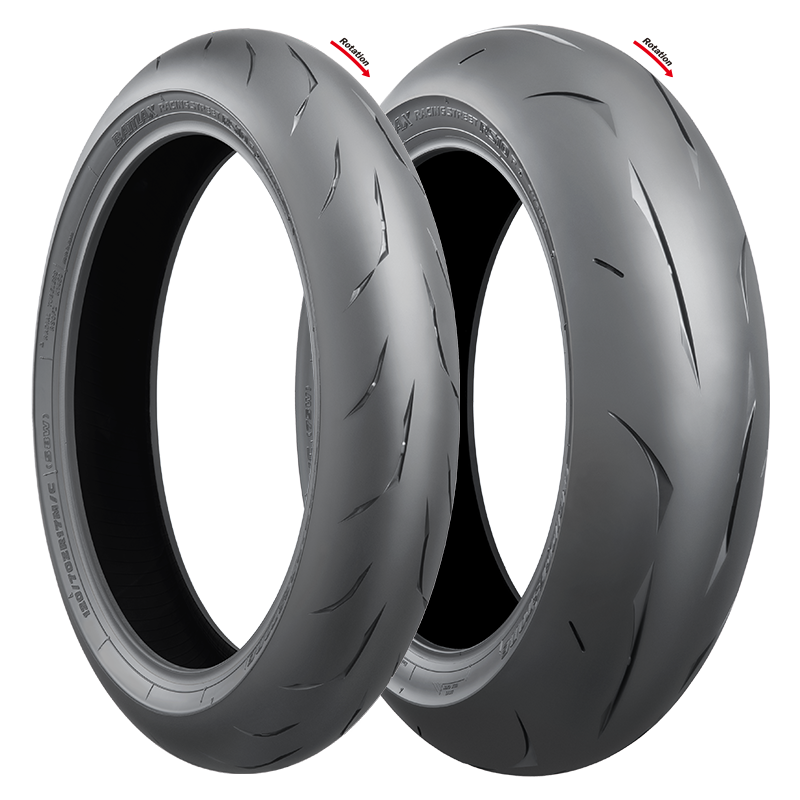
The RS10 has hardly any grooves, allowing more rubber to grip a dry track or road. Now look at the tread pattern on Bridgestone Battlax RS22, which has significantly more grooves cut into it than the RS10:
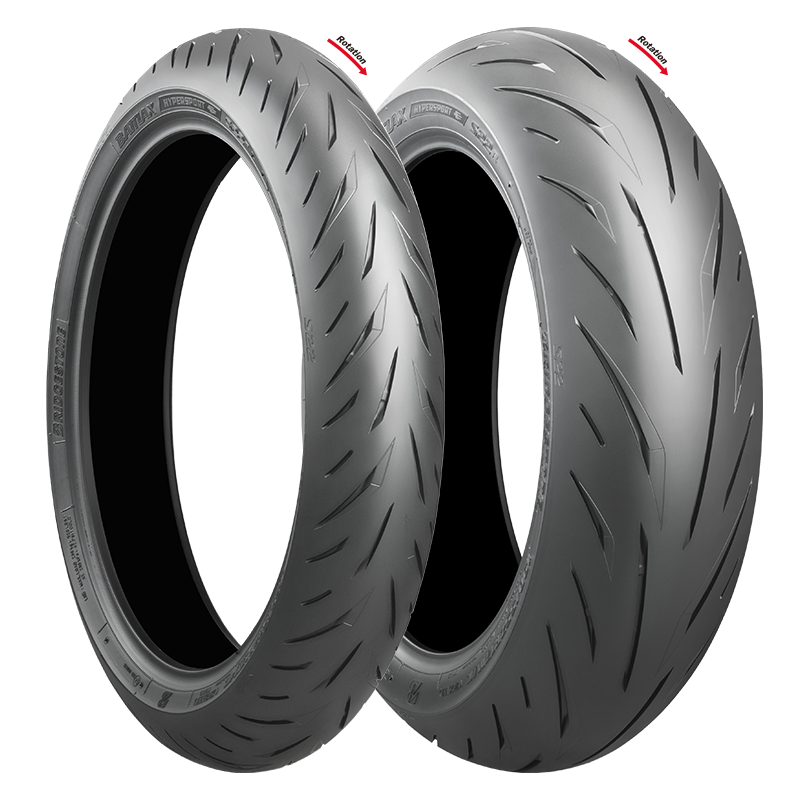
Here’s how Bridgestone describes the RS22:
- Riders who mostly enjoy sports riding.
- Riders of supersports motorcycles who want a combination of performance in the wet and long life.
- Riders who are thinking of starting riding on the racetrack.
In other words, this is a performance tire that’s good enough for newer track day riders, but can handle a wet road and won’t wear down as quickly as the RS10. That means the rubber isn’t as soft and grippy, but it will cost less and last longer. Sounds like a good tire for someone who wants a good all around performance tire for the road.
Now take a look at the Bridgestone Battlax Sports Touring T32. You’ll notice it has far more grooves than the RS10 and RS22:
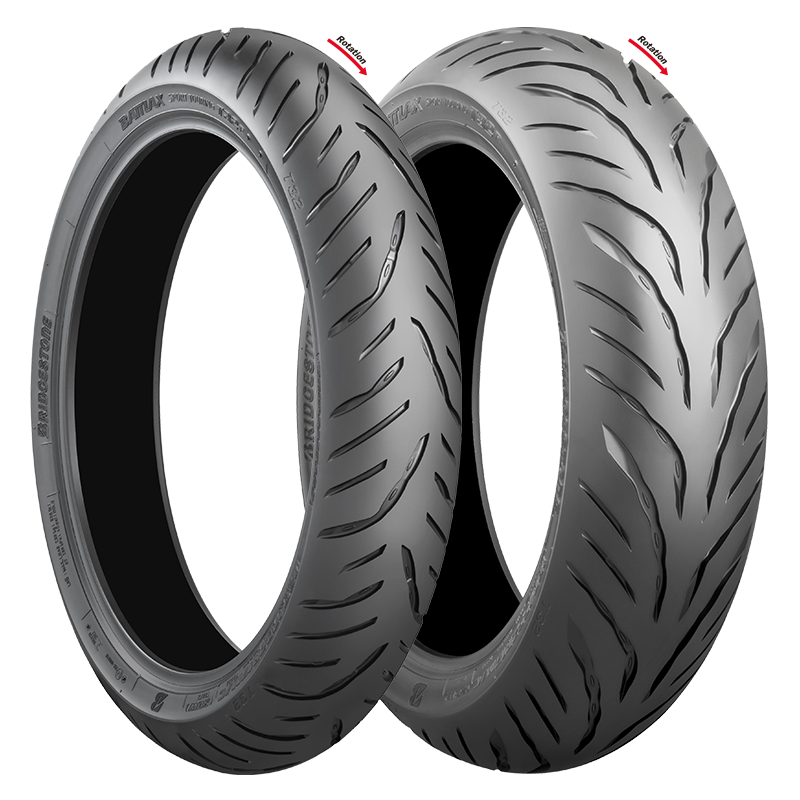
The “sports touring” category generally refers to performance bikes built for longer distance riding. Longer rides sometimes involve rain, so it’s best to have a tire that can move that water out of the way. Here’s how Bridgestone describes the T32:
- Riders who enjoy riding on winding road with a touring motorcycle.
- Riders who enjoy riding a super sports bike with touring tires.
- Riders who want high performance in wet conditions.
- Riders who want to ride with sense of security even when caught in unexpected rainfall.
Translation – these tires aren’t for the race track but they’ll last a long time, do well in the rain, and still perform well enough on twisty roads. Sounds like a good category for commuters or riders doing distance rides on a performance bike.
Know Thyself… Then You’ll Know Your Tire
Start by asking yourself a few honest questions, then use the answers to help yourself select a good tire to match. Here’s where we recommend you start:
Do you commute on your bike, ride long distances, or ride when it rains?
Get a sport touring tire. It’ll handle the rain, last longer, and save you money in the long run.
Do you mostly just ride twisty roads on the weekend?
Get a performance tire to gain that good grip, but one that still has a decent amount of grooves for an unexpected rain shower. Generally speaking, this is the category just above sports touring tires in terms of performance.
Do you mostly ride twisty roads on the weekend, but plan on trying a track day at the local race track?
Get a performance tire with a description like the Bridgestone RS22 above. In other words, one in which the manufacturer specifically mentions it can handle a track day.
Do you only ride twisty roads or the track, only ride when it’s dry, and have a lot of money to throw away?
Get a track tire, but not a race tire (more on that below). Something like the Bridgestone RS10 above would do just fine to kill your wallet on a regular basis.
Final Thoughts and Warnings
Race Tires
For those of you wondering if race tires are a good idea, they’re not. That is unless you’re actually racing at a race track. Race tires wear very quickly and only achieve optimal levels of grip at high temperatures, temperatures that are basically unreachable on the road. Don’t waste your money on them, and for f***’s sake please do NOT buy used race tires for use on the road.
How Old is Too Old?
I wouldn’t use tires that are past five years old, but a set of tires could be undone by sitting uncovered in the rain and sun for an even shorter period. If in doubt, get new tires.
“I Can’t Afford Good Tires”
The tires are literally the only thing connecting your motorcycle to the road. Don’t put yourself in danger by riding on tires that are too old, worn out, damaged, the wrong size, or the wrong type. New tires are a lot cheaper than what happens in an accident. If you can’t afford decent tires, you shouldn’t be riding.
Tire Pressures
Check them every time you ride. It’s a good way to find out if you have a puncture and/or slow leak, which can save your life. Last summer I got a nail in my tire which I noticed out of pure luck, but a tire pressure check before my next ride would have also revealed the slow leak. Manufacturers list recommended tire pressures for each model on their site, so a quick Google search will help you stay in the right range. For example, here’s Dunlop’s page complete with recommended tire pressures for their Q3+ and Q4 tires.
Can I Use a Wider Tire than the OEM?
It’s safest to stay with the OEM size. If you use a wider tire on a motorcycle, say a 190 instead of a 180 on a 5.5 inch wide wheel, the tire gets pinched and actually becomes taller than intended. That’s because you’re forcing an extra 10mm of tire width onto the same wheel width, and it has to go somewhere. In this case, upward. The tire becomes taller and changes the handling, braking, and other factors. Here’s a very crude diagram:

